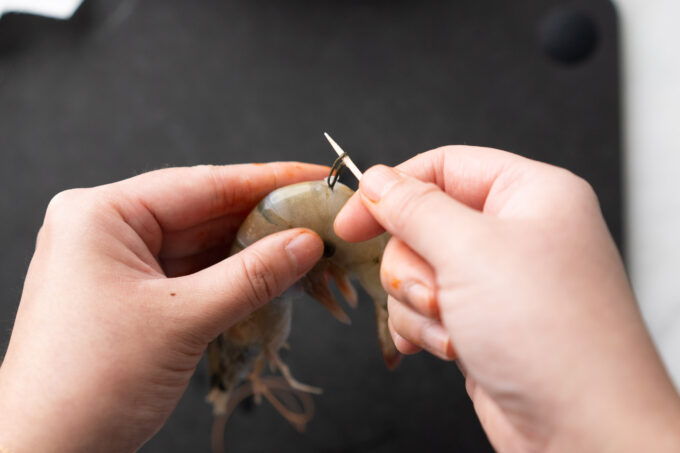
Planning to cook shrimp and need a step-by-step tutorial on the best way to peel and devein them? Some might say you don’t even need to devein them, but we’ve already made our decision haven’t we?
I’ll show you how to clean shrimp quickly and even devein them with or without shells, with one really fast method my mom taught me.
What’s in the vein of a shrimp?

The black line on the back of a shrimp is the intestine, aka where all the shrimp’s digested food (a.k.a. poop) is located. If this sounds unappealing to you, it’s no wonder people choose to devein this intestinal tract before cooking their shrimp.
But on the flip side, you’ll notice most Asian restaurants will leave this in, and the diners are unfazed. I’m not here to tell you what’s right, but just to tell you some facts :).
But what’s the vein on the underside of shrimp?

Shrimp also have another vein on the underside of their body near the feet. This second vein is the blood vessel. Unlike the intestinal vein, which is black in color, the underside vein is white. You don’t need to remove this vein on the shrimp because there aren’t any textural or flavor issues if you keep it intact.
Is it necessary to devein shrimp?
I personally grew up eating cooked shrimp that wasn’t deveined, and I honestly couldn’t tell the difference. If you are planning on cooking the shrimp and don’t mind the intestinal vein, it’s not necessary to remove it.
I typically don’t bother to devein smaller or medium-sized shrimp. Some chefs prefer to devein jumbo or large shrimp because the vein can be bigger and potentially produce a sandy, grit texture. I would also recommend removing it if you plan on eating the shrimp raw for nigiri or sashimi so you don’t have a gritty texture or bitter taste.
Should you peel shrimp shells before deveining?
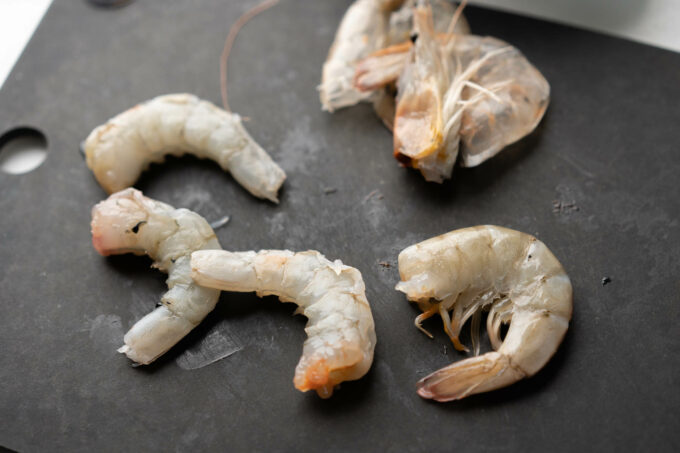
If your recipe calls for keeping the shells on, it’s possible to devein the shrimp using various techniques (making a butterfly cut with a knife or using a toothpick). You don’t need to peel shrimp before deveining them, but it is much easier to devein them after removing their shells. Without the shells, it’s much easier to cut or pierce through the meat or even visibly see where the vein is located.
Here is how to peel shrimp with your hands:
- Option to remove the head. Twist and pull the head off completely.
- Pull off the legs.
- Use your thumb to release the underside of the shell from the meat and begin peeling each of the segments of the shell.
- Continue until all of the shells are removed.
How to peel shrimp shells fast (w/ shears)
Peeling shrimp shells can be time-consuming, and the fastest way I’ve found to unpeel them is using a pair of kitchen shears.
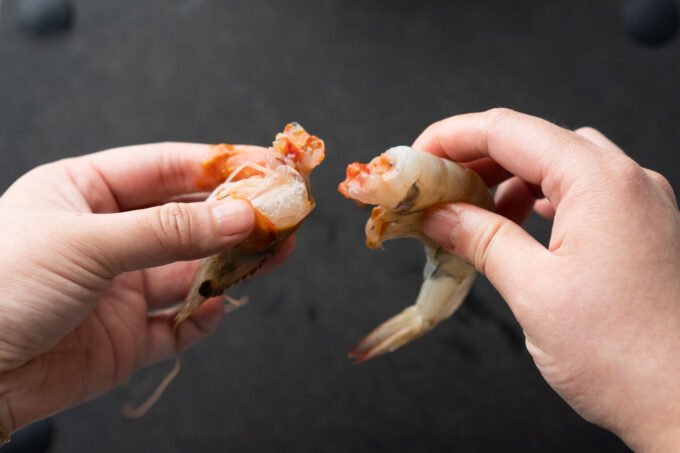
1. Remove the head by twisting and pulling it off the body.

2. Cut alongside the top center of the shrimp using shears, where the shell is the hardest, and the intestinal tract is located. The smaller your shear tips the easier it will be. Try not to cut deeper than 1/4″ into the flesh.
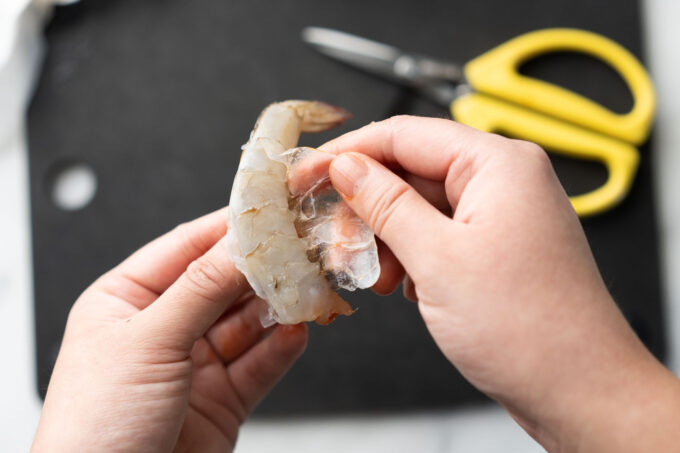
3. Once you reach the tail, peel off the shell from the meat and discard the shell.
While there are dedicated shrimp peeling tools you can buy online that make it easy to peel and devein shrimp at the same time, I don’t like buying single-use tools for the kitchen. Alternatively, if you don’t have kitchen shears, you can also use your fingers and manually remove the shells. A pro tip is to keep the shells to. make seafood stock.
How to devein shrimp with shells still on (w/ a toothpick)
The easiest way to devein shrimp with shells and heads on is to use a toothpick. This is the cleanest way possible and doesn’t damage the shells. My mom taught me this toothpick process:
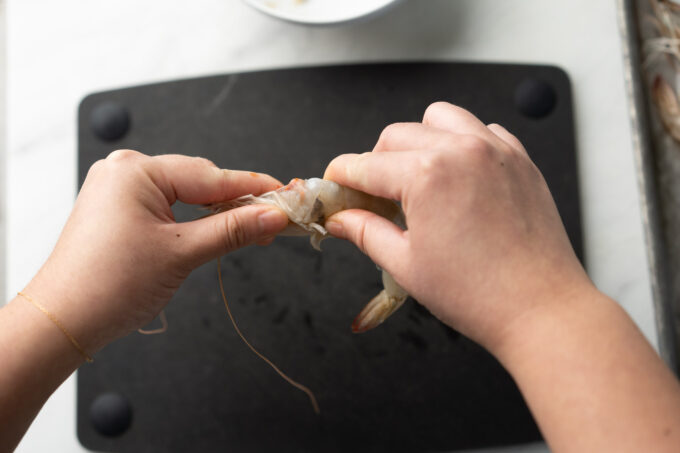
1. Optionally, remove the head by twisting and pulling it off. This method also works if you leave the head on.
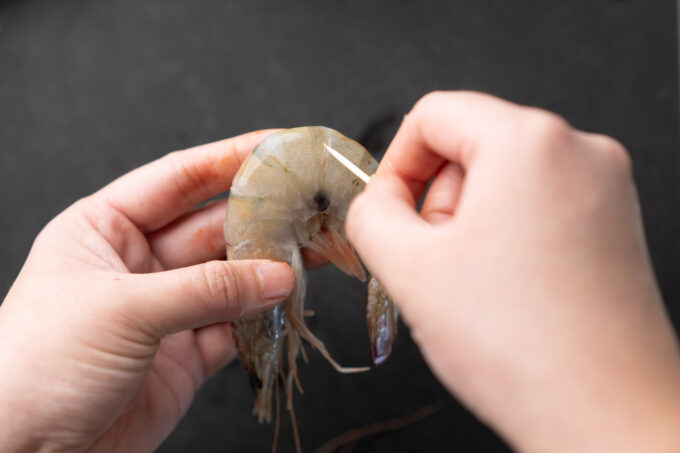
2. Locate the back of the shrimp where the intestinal vein is. Find the joint between the second and the third shell segment from the head.
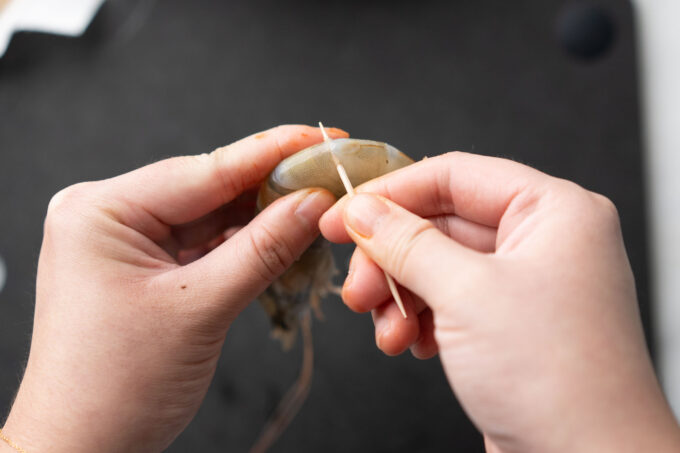
3. If you can see the vein, pierce the area underneath with a toothpick. If you can’t see the vein, pierce the joint between the shell segments with a toothpick between ⅛ and ¼-inch deep–this should be under where the shrimp intestinal vein sits.

4. Gently lift the toothpick and vein above the shell and pull the remaining vein out in one piece.
How to devein shrimp without shell (w/ a knife)
Deveining shrimp without shells is much easier to do because you don’t have a hard outer shell to work with. The easiest way to devein shrimp without shells is using a knife, and it’s the most common method.
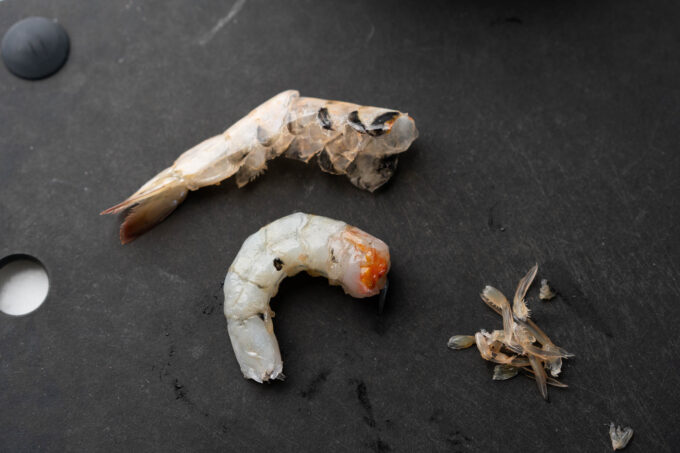
1. After you’ve removed the head and shell, lay your shrimp on its side.
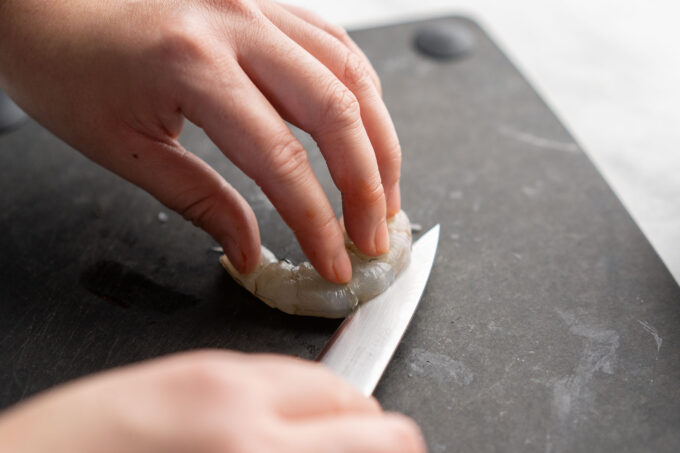
2. Make a shallow cut (about ⅛ to ¼-inch depth, depending on the size of the shrimp) with a paring knife alongside the shrimp’s back, from the tail to the head. The slit only needs to reach where the intestinal vein lives.
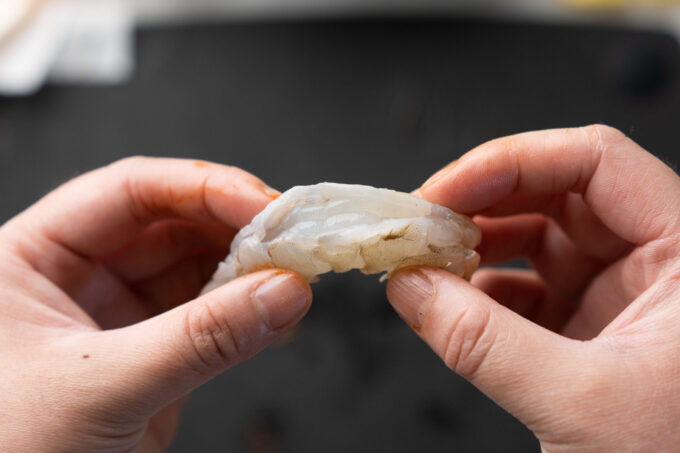
3. Remove the tract and clean the shrimp in a bowl of water or running water.
How to tell if shrimp is deveined
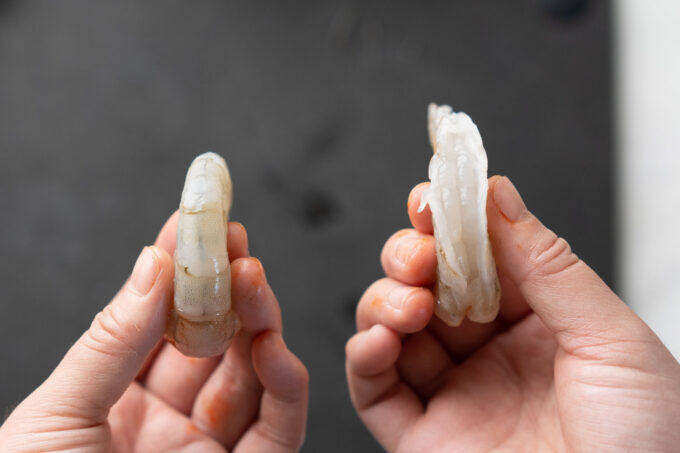
To check if a shrimp is already deveined, you can inspect its back. A shrimp that is not deveined has a dark line running along the back from the head to the tail. Most deveined shrimp from the grocery store (whether it’s fresh or frozen) will have a butterfly cut along the back where they removed the intestine. The head of the shrimp is also cut off, too.
Many freezer shrimp are already deveined and peeled, so this makes it easier to use for recipes. If you need to thaw the frozen shrimp, you can keep it in the refrigerator overnight or place it in a bowl of ice water for 10 minutes.
What happens if you don’t devein shrimp?
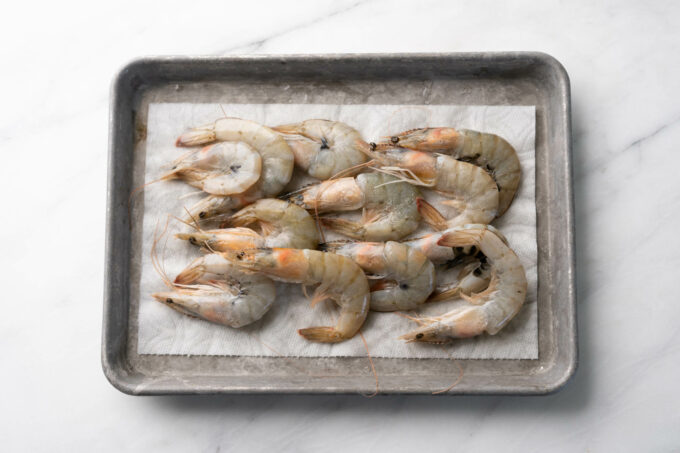
There are no negative health issues for eating cooked shrimp with intact intestinal veins. However, sometimes the shrimp’s digestive tract might have grittiness when you eat it if you don’t remove the vein. Some people are also grossed out by the sight of it, so you may want to remove it if you want a cleaner shrimp presentation.
Is it easier to devein shrimp before or after cooking?
It’s definitely easier to devein shrimp BEFORE cooking. Raw shrimp is translucent, so you can see the intestine line, and it’s also much more pliant and easier to cut. Cooked shrimp is opaque and makes it difficult to see where to cut. The intestine line in cooked shrimp is also much more fragile, so it’s harder to remove while it’s fully intact.









